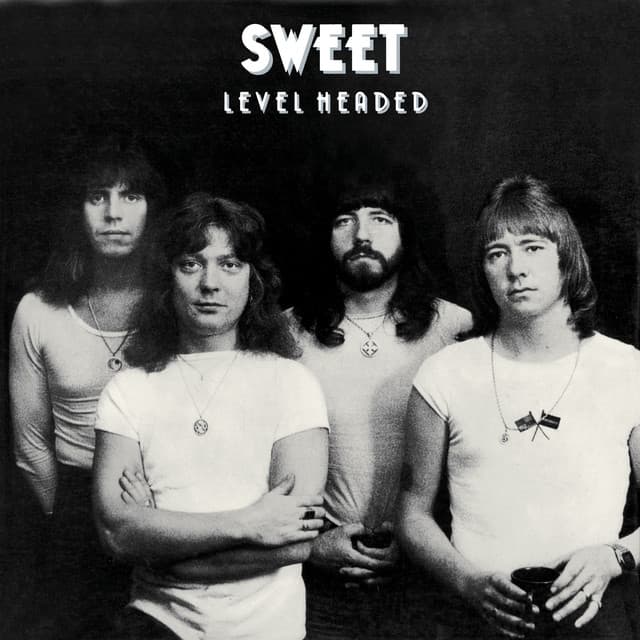
The Ghost in the Machine: When Glam Rock’s Heaviest Band Went Abstract
For fans of Sweet in the 1970s, the band was synonymous with electrifying glam rock anthems that filled stadiums with thunderous energy. Known for their flamboyant costumes and tight vocal harmonies, hits like “Block Buster!” and “Ballroom Blitz” were staples of the era’s high-octane rock scene. Yet, tucked away on one of their albums lies an unexpected and hauntingly beautiful piece: “Air On ‘A’ Tape Loop.” This instrumental track represents a profound deviation from the band’s usual fare, offering listeners an introspective and experimental journey far removed from their chart-topping singles.
Unlike their high-energy hits, “Air On ‘A’ Tape Loop” was never released as a single nor did it claim any significant chart success. Instead, it exists as a deep album cut, a reward for those willing to dive beneath Sweet’s glossy surface. This piece often appears as the second half of a two-part suite paired with “Anthem No. II,” featured on the 1978 album Level Headed. The track epitomizes the complicated and evolving dynamic within the band’s core members: Brian Connolly, Steve Priest, Andy Scott, and Mick Tucker. Their work on this album signals a bold shift away from the carefully crafted pop gems designed by hitmakers Nicky Chinn and Mike Chapman toward a more adventurous, layered, and artistic soundscape.
By the time Sweet released Level Headed, they had firmly asserted their independence from the constraints of commercial expectations. The album marked a major departure, gravitating towards progressive rock, intricate symphonic arrangements, and rich keyboard textures—a stark contrast to the hard rock guitar riffs characteristic of earlier records like Desolation Boulevard and Give Us a Wink. In this creative phase, the band embraced the avant-garde, with “Air On ‘A’ Tape Loop” standing as a pinnacle of their experimental ambitions.
This track rests on the innovative use of tape loops, a technique drawn from the experimental musique concrète movement of the 1950s and 60s. The title cleverly references classical music’s J.S. Bach “Air On A G String,” replacing the refined, flowing string melodies with a repetitive and mechanical sonic landscape that challenges traditional listening experiences. The track swirls with atmospheric synthesizers, echoing effects, and distorted fragments that drift in and out like vivid dreams, creating a hypnotic and otherworldly sound collage.
The significance of “Air On ‘A’ Tape Loop” transcends storytelling or catchy melodies; it is a study in mood, texture, and sound as standalone entities. It reflects an artistic urge to strip away Sweet’s familiar glamour and commercial hits to unmask the serious, creative musicians beneath. This was no attempt to score a radio hit but rather a solemn artistic statement—an abstract work demanding respect and deep attention. It was Sweet’s quiet, intellectual rebellion within an industry that favored predictable formulas.
“This wasn’t just about making music that sold records. It was about making music that made people think—and feel in ways they hadn’t before,” explained **Andy Scott**, Sweet’s lead guitarist and key creative force behind the track.
Such an approach confounded many listeners in 1978, when fans still expected loud guitars and sing-along choruses. Yet, in retrospect, this daring move now feels remarkably audacious and visionary.
**Mick Tucker**, the band’s drummer, reflected, “We wanted to shake off the labels that weighed us down. This track was our way of saying, ‘Look closer. There’s more to us than just glam and hits.’”
Listening to “Air On ‘A’ Tape Loop” today, one steps into a world far removed from glittering stages and the gloss of Top of the Pops. Instead, it evokes solitary moments—hours spent in a dimly lit room, headphones in place, grappling with the ethereal and sometimes disorienting textures that fill the soundscape. It serves as a reminder that true rock artists are not static icons but restless explorers, forever challenging their audience’s expectations to honor their own creative instincts.
**Brian Connolly**, the band’s fiery vocalist, acknowledged the track’s place in Sweet’s journey: “It wasn’t easy for everyone to understand back then. But it was, at its core, a declaration that we refused to be boxed in.”
Ultimately, “Air On ‘A’ Tape Loop” stands as a powerful atmospheric moment in rock history, a testament to Sweet’s artistic evolution and the complexities of musical creativity itself. This piece invites listeners not only to reflect on Sweet’s transformation but also to appreciate the profound possibilities of sound beyond conventional boundaries.
Music historian **Dr. Emily Harris** commented, “This track exemplifies the brave intersection where glam rock meets experimental art. Sweet took a risk that few bands dared to take, blending rock’s energy with avant-garde techniques to create something truly unique.”